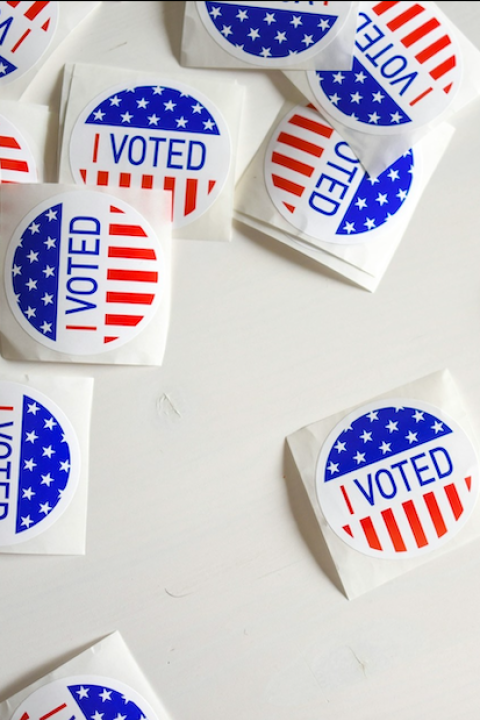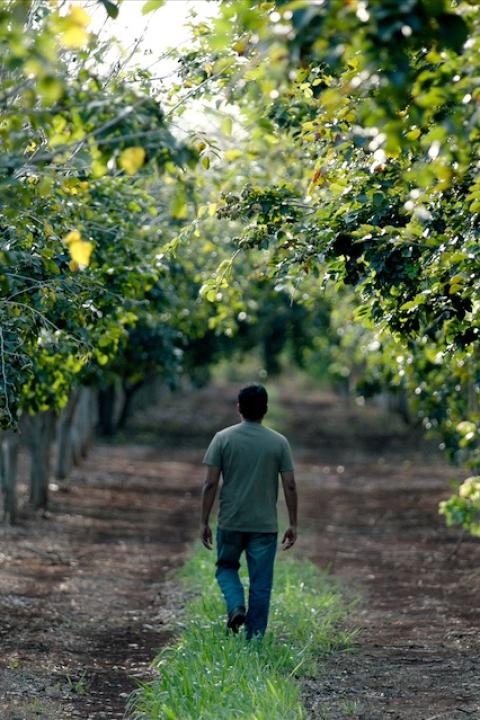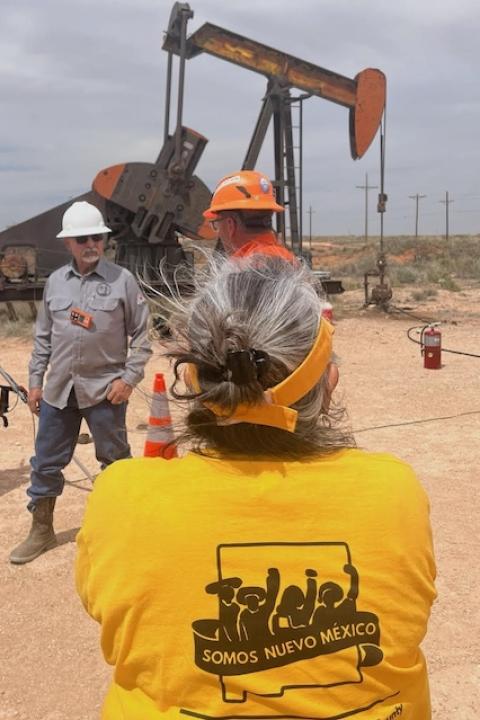
(Image: Sean Stone/Unsplash)
This story on how people are using solutions storytelling to tackle tough problems is part of The Solutions Effect, a monthly newsletter covering the best of solutions journalism in the sustainability and social impact space. If you aren't already getting this newsletter, you can sign up here.
If you sift through a few climate change communication guides and research papers, you’ll start to notice a trend.
In an article about using narratives to better communicate climate science, researchers recommend connecting with the audience by considering what they care about and overcoming fear by highlighting the benefits that come with climate-related lifestyle changes.
In a study about communicating science to motivate action, researchers focused a messaging campaign on how climate change impacts birds. They combined that with examples of actions people could take to help address the problem. The campaign led to more than 33,000 bird enthusiasts taking action to support clean energy policies, which contributed to legislative wins in four U.S. states.
In its Communicating on Climate Change guide, the United Nations recommends sharing solutions to keep people feeling empowered and motivated instead of overwhelmed.
In last month’s Solutions Effect, I wrote about news avoidance and how people avoiding the news are looking for more positive and solutions-focused journalism.
Did you catch the trend? The way you frame the problem matters, a lot. Solutions journalism is one example of an effective way to frame discussions about problems without causing people to tune out, but we can’t reach all audiences through the news. Solutions-focused framing can be — and is — applied to other methods of communication to engage people in these difficult conversations, too.
Video games
Every week, 212.6 million Americans (65 percent of the population) play video games for at least an hour, according to a report from the Entertainment Software Association. The majority of them play for at least four hours. I used to be a part of that weekly number and can vouch for how incredibly powerful a fictional story can be when you actively play a role in it.
Some game developers are using that storytelling power to share climate messaging. The game Terra Nil, for example, requires players to transform environmental wastelands, polluted oceans, and flooded cities into thriving ecosystems. Players may need to use geothermal energy or repurpose skyscrapers to grow bamboo, for example. That may not sound like the escapist fun we often associate with video games, but over 300,000 people had already played it a week after it launched, Bloomberg reported.
This is a growing theme. Players in Alba: A Wildlife Adventure gather petition signatures to stop a property developer from turning a wildlife reserve into a hotel. Green New Deal Simulator asks players to decarbonize the U.S. and draws inspiration from real-world policies.
The connection and community fostered by gameplay are powerful. But the beauty of this style of communication is the ability to break big problems into manageable pieces (like levels in the game) to make them feel solvable.
“Games are also really good at [fostering] this idea of progression,” Deborah Mensah-Bonsu, founder of the consultancy Games for Good, told Bloomberg. “You don’t have to solve the whole thing in one go. There’s steps. If you take the first step, that will then fuel action for the next step. As long as those things feel doable, you’re going to be much more likely to reach that larger behavior change or that larger change as a society. I feel games can really help people to get on that ladder of ‘Let’s do something together’ and ‘Let’s do more.’”
The industry still has its own environmental impacts to tackle, though. It’s estimated to generate 24 million metric tons of carbon dioxide emissions each year.
Cookbooks
I know that I can search for any recipe imaginable online, and one might argue I don’t need a cookbook. But I beg to differ. Flipping through a cookbook when I don’t know what to cook for dinner is less daunting than scavenging the internet for options. As more people begin to change their diets to reduce their environmental impact, cookbooks could become a new way to encourage conversation about the climate. Making climate-conscious recipes easily accessible also makes personal action easier. With an estimated 30 percent of the world’s greenhouse gas emissions stemming from the food system, every effort counts.
Good Catch: A Guide to Sustainable Fish and Seafood with Recipes from the World's Oceans was published last year with the intent to share seafood recipes while educating readers on sustainable fishing and the impacts of seafood sourcing, as TriplePundit previously reported. The book blends recipes with personal anecdotes and scientific analysis to make the topic more approachable.
“Having a true conversation about food sourcing will offend a lot of people,” Valentine Thomas, the book's author, told TriplePundit. “What can we do instead of calling each other pieces of shit because somebody's eating a steak, or patting each other on the back because we shared a campaign about saving the turtles? Realistic conversations are how we're going to evolve as a species.”
Climate cookbooks are far from popular right now, but “you can see a whisper of a subgenre beginning to emerge. At least a dozen have been published since 2020,” Caroline Saunders, a climate cuisine specialist and newsletter author, wrote for Grist.
Saunders lists several intriguing cookbooks like Eating for Pleasure, People, and Planet, which covers themes like eating plant-based, low-waste, and using local, seasonal ingredients. And For People and Planet, a cookbook created by the United Nations and the Kitchen Connection Alliance, explains topics like biodiversity, food waste reduction and the food system.
Comedy
Much of the issue with climate change information is that it’s often dull or frightening. It seems an increasing number of people are turning to comedy to remedy that, and there’s science behind why that works. Humor can help people process negative emotions while sustaining feelings of hope, according to an analysis by Emma Carroll-Monteil, an environment and sustainability education researcher at the University of Edinburgh. Though not all climate-focused comedy is framed through solutions, I’ve seen a few examples that are, and I hope to see that niche grow.
Research has shown that combining humor and education increases the enjoyment of learning, increases the amount of information people perceive they’ve learned, and promotes new ideas and behaviors, according to the analysis. Since most adults learn about climate change through media, this is a particularly good way to reach those who didn’t learn about it in school.
But it does require that the jokes are well received. As we’ve seen many times across all forms of media, that’s not always the case.
Beyond the stand-up stage, podcasts like “The Climate Denier’s Playbook” also take a swing at using humor to discuss climate change in new ways. Hosted by Rollie Williams and Nicole Conlan, “two comedians with master's degrees in climate science and policy and urban planning,” the podcast does an excellent job of using humor to discuss the myths and misinformation around climate change. It’s also mentioned in this New York Times article by climate and environment journalist Hilary Howard which includes several non-podcast examples.
Of course, solutions-focused framing can apply to any of the issues we face. Climate change is just one example. Next time you’re tasked with engaging an audience with a problem, give it a try. And if you already use solutions to frame stories about problems in your industry, let me know how you do so here!

Taylor’s work spans print, podcasts, photography and radio. She brings her passion for covering social and environmental issues through the lens of solutions journalism to her work as editorial assistant.














